It so happened that when I got my first Pentax 67 many years ago it was equipped with Pentax 67 90mm F2.8 lens. Eventually, this led to a decade-long “love affair” with the Pentax 67 system.
And now I think that it is for the best that I started shooting with this particular lens which turned out to be truly universal. And still remains such.
It is worth mentioning that this is not the first prime lens that Asahi released for its Pentax 67 system. It was preceded by other normal primes: well-regarded 105mm F2.4 with an exceptionally beautiful bokeh, and 90mm F2.8 LS — the lens with a leaf shutter.
In 1979-80 Asahi revamped its line-up of lenses, having rebranded “TAKUMAR/6X7” as “PENTAX-6X7”, and started to produce a series of completely new lenses designed from scratch. A new 90mm F2.8 became one of the first in this line-up.
And despite the fact that the 90mm F2.8 is about half f-stop darker than the 105mm F2.4, it has some apparent advantages, which subsequently became very important for me.
Size and weight
It is lighter and more compact compared to the 105mm lens – by 143g and 15mm respectively. It may seem at first that this difference is pretty small, but in fact, the Pentax 67 camera rather resembles a brick with a lens attached to it, both in terms of its size and weight.
And lenses that go with this system are quite big, with most of them weighing above 0.5kg. That is why for travel and outdoor shooting every 100g on top of the set, as well as the size of the camera and the lens, are essential.
Image quality
It is sharp and contrast throughout the entire aperture range, even when it is wide open. A majority of lenses are manufactured in such way as to achieve optimum performance at medium apertures. This is also fair for 90mm F2.8. In fact, I do not do technical tests, but comparing printed images I can say that the sharpness of images shot with the aperture of F2.8-4 is almost equal to that of F5.6-11 and is almost brilliant.
Field of view
It covers 53° which is wider than 105mm lens by 7°. It seems to be not that much but this makes it closer to a 75mm lens, which is wider than 90mm lens on 8° and places it exactly between 75mm and 105mm lenses. So, you can shorten a gap in focal lengths between the 105mm standard lens and the 75mm wide-angle lens — just make a couple of steps with your feet and you will get a wider angle closer to a 75mm lens. This will allow you not to carry an additional lens and thus make your system set minimum 0.5kg lighter!
There is another good feature — the lens can be used on Pentax 645 cameras via a special lens adapter, working similar to the normal Pentax 645 lens. So, you may keep the Pentax 645 camera body as a backup camera without any native 645 lenses.
Close focusing
It has a close focusing distance of just 65cm, which makes it unnecessary to use extension tube #1.
The close distance is ~7.2× of the focal length while its typical value is 9-10×, such as 1.0m for 105mm. It gives 0.2× magnification ratio and image area around 35×28cm, which makes it comparable to a close-up lens near 135mm F4 Macro.
But this comes at a price; in particular, it leads to a fall in the aperture by 0.5EV at a minimum focusing distance. But it can be easily compensated by opening the aperture by half a step.
Aperture
The lens has 8 aperture blades, which is typical for most of the Pentax 67 lenses. I rarely stop it down below F11, so I will show several photographs of the aperture opening up to this value.
Filters
The lens has a 67mm filter thread which works fine with both screw-in and special bayonet mount filters.
Hood
The original clip-on plastic hood PH-SB 67mm costs around $50. While travelling I use a cheap compact metal round hood for $3 and during the staged photo shoots I prefer to use the Mamiya G2 bellows lens hood mounted with a special adapter.
Bokeh effect
Other sample images
A bit of street photograpy performance…
and some cityscapes from Italy…
a couple of landscapes from the Curonian Spit — a truly surreal place. These dunes are so fascinating that it is almost impossible to stop taking pictures of them.
And finally, you may browse a lot of images on Flickr.
Summary
So, it is completely different from 105mm F2.4 — a great all-around standard lens for everyday use, truly versatile, compact and lightweight with the great image quality. So, which one to choose? I’ve got both of them. Why? Well, I will describe it in a further article.
Pentax 67 90mm F2.8 lens data
- Focal length: 90mm
- 35mm equivalent: 46mm
- Aperture: 2.8 ~ 22 (8 blades)
- Close distance: 65cm
- Magnification: 0.2×
- Picture area: 35×28cm
- Exposure factor: ×1.44 (+0.53EV)
- Effective lens speed: 3.4 ~ 26.4
- Optical formula: 7 elements, 6 groups
- Field of view: 53°/42.5° (Diagonal/Horizontal)
- Filter: 67mm, screw-in and bayonet
- Hood: PH-SB 67mm
- Case: S90-100
- Dimensions: 92×45mm
- Weight: 0.49kg
P.S.
Thanks for reading! I would be very grateful if you point out my possible mistakes, add extra information, or just share your experience. Scroll down to the Leave a reply section and share your thoughts about it. Your opinion is important for me. I enjoy answering your questions as the answers may often benefit many other readers and the process of answering allows me to better piece together my existing knowledge and find ideas to improve my articles.


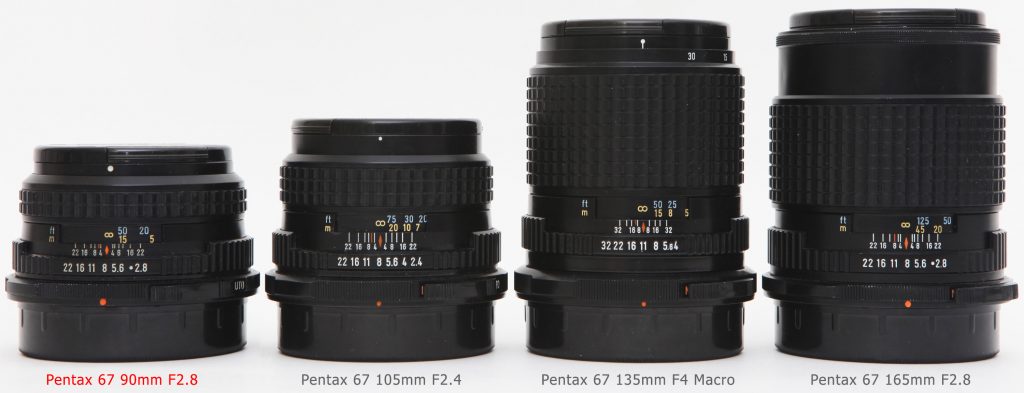


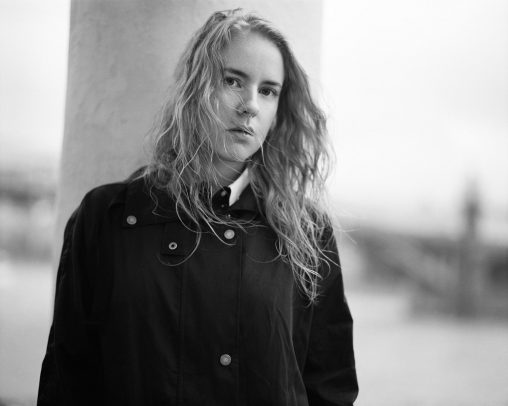















































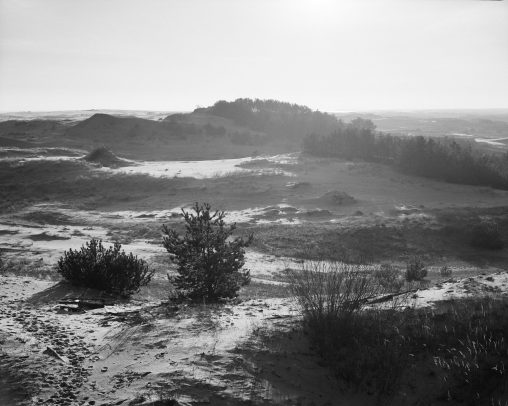



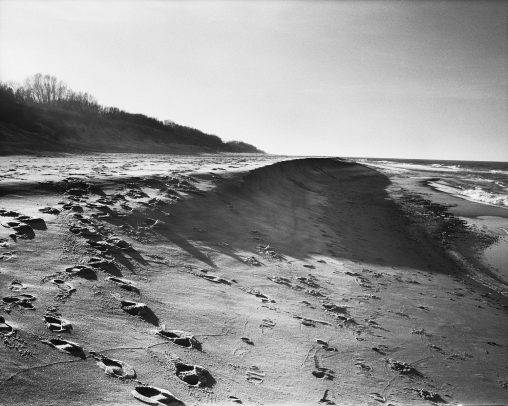
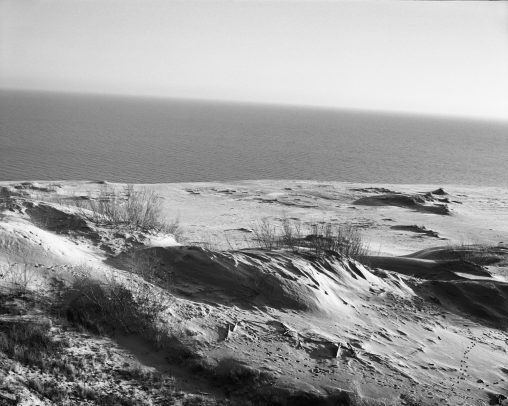








Pepe
Excellent review. Thanks for the information. You helped me decide to purchase this lens.
Sasha Krasnov
Thank you, Pepe! Have a great shots!
Ivan Bird
Hi Sasha. The nicest most informative site for these cameras I have come across. Feels new and fresh by comparison to most information and sites around on these beautiful cameras and lenses. Great work and much appreciated. I’m falling in love with my 6×7 and like the older 105 lens it came with but it is very warm compared to the newer versions, ok for B&W. There is something very special about the balance in the bokeh which sets it apart. The warm colour has something to do with the coating and apparently exposing it to daylight will gradually reduce the yellow as it’s radio active ? Anyways, in looking around for a newer version of the lens I eventually bought a one with a 67ii camera included, which is one of the last, bought from Calumet by the owner just before the full onslaught of digital. It’s had 50 rolls go through it before it was put away until now. I’m very excited about it arriving. Your thoughts on the 90 mm are very interesting. Keep it up !
Regards Ivan.
Sasha Krasnov
Hello Ivan! Thank you for the message! Yes, some of the oldest 105mm F2.4 are changed to yellow, both Super-Takumar and SMC-Takumar due to the use of high index Thorium glass. Here is list of radioactive lenses. If you will shoot B&W only — it is ok, but with color film, you will get a color tint of course. Many sources recommend exposing the lens under direct sunlight to get glass clear. Other sources recommend exposing it under a cheap UV lamp from Ikea. As for me — I would first try to expose it to direct sunlight for some hours. Anyway, you should have a pin that is of course radioactive.
Brian
Hi Sasha
I have just bought a Pentax 67 with the 90 mm lens after reading your review I am very happy with it. All I have to do now is get out and use it
Many thanks and a happy new year to you
Brian Weight
Sasha Krasnov
Hi Brian
I guess you did a great choice 😉 Do not hesitate to share your experience with the camera and lens!
Tomás Regueiro
Hello Sasha, excellent review, I have been using this system for many years and I love it.
Greetings from Mexico and good vibes!
Sasha Krasnov
Hello Tomás,
Thank you very much for visiting my website and for the feedback. More reviews on Pentax 67 lenses are coming. But it is a time wasting process.
You have a great portfolio! Cheers!
Scott A Micciche
I’m sorry for commenting so late after this was published, but I also have the 90mm and find it superb. I was wondering how loud the shutter would be for some of the street scenes. Did people turn around, or does the sound dissipate at a distance so it’s not very loud to them? I’m thinking to bring the P67 along for some Bologna travel and, since it’s got some dark alleyways and porticoes, I could get some nice 6×7 images. Cheers, Sasha, and thanks for these reviews.
Sasha Krasnov
Thank you, Scott, for reading! Yes, the shutter is quite loud and people turn around. But it seriously depends on the distance. If you shoot at 4-5 meters people usually can’t identify you. Also, I always use the waist-level viewfinder for street photography. It doesn’t reduce the shutter sound of course, but it helps to hide against meeting face to face with the subject when shooting at a short distance.
Scott A Micciche
Thank you for the advice, Sasha, it is extremely helpful. I am contemplating using the 67 for an upcoming return trip to Bologna, where, last time I visited, I shot mostly with a Hasselblad, but quite often needed closer distance and the camera to my eye level. I think the 90mm will be a great choice for those narrow streets and under the portici. Cheers!
Sasha Krasnov
Thanks for reading, Scott! I’m so glad helping you to make this choice and hope you’ll like it!
Renato
hello Sasha many years ago I had the 90mm. that in a moment of crisis of photographic identity for the advent of digital I sold together with my 67 with 2 other beautiful lenses the 45 and the 165. even today I can’t give myself a reason for the wicked decision. Today I went back to having the 6×7 curtain sing again. that said, regarding some images taken with the 90 I must say that they are extraordinary. even if today I use the 105 I was taken by nostalgia and I bought again the 90 that I am waiting for and that I will stay again.
Sasha Krasnov
Hello Renato. I also have both 105mm and 90mm. These lenses are so different to keep only one of them 😉
Fatlind
Dear Pentax friends. I am considering getting the 105 mm f2.4 for my Pentax 645Z. Any suggestions for the adapter will be appreciated. I have searched , however, I am not certain which one to choose from….
Sasha Krasnov
You would better get the original Pentax adapter 645 for 67 lens.
Jason
Hi Sasha,
I hope you’re doing well. Really insightful article! I’m new to the 6×7 world and loving it. My kit came with a 75mm f4 lens. It’s really great and super sharp. I’m looking to invest in a second lens for close up portraiture and full body as well as landscapes. Would you have a recommendation between these two lenses if you had to pick one? Thanks!
Sasha Krasnov
Hi Jason,
hope I’m not too late with the answer. If you will keep a 75mm lens then you do not need a 90mm lens. The reason is the difference of FOV, it’s only 8 degrees! So, probably you would better get a 105mm lens instead, but it is expensive now. I would recommend getting a 135mm F4 Macro lens. This is a real gem 😉 it’s cheap with a beautiful bokeh lens.
Rodney
Just stumbled upon your site and have been immediately rewarded with a wonderful source of information and data, and an outstanding visual exploration of the possibilities of this lens. Thank you so very much for publishing this!!
Sasha Krasnov
Thanks for visiting my website!